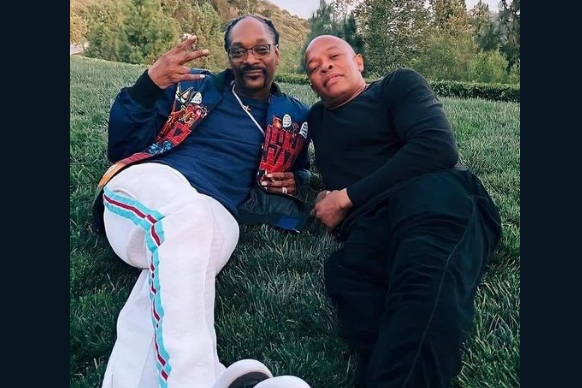Thirty years ago, Snoop Dogg burst onto the scene as a smooth-talking gangster rapper, shrouded in conflict and controversy. Today, at 6’4″, he stands tall as one of the nation’s most cherished icons and a testament to one of its most extraordinary success stories, according to PEOPLE.
“You think about all the things that I went through and where I’m at,” he said, seated inside the office of his South Los Angeles compound, where he’s surrounded by Death Row Records memorabilia and puffing on a joint (now legal in 24 states, including California).
“It’s a lesson: to let the world see growth, how somebody can go from being hated, banned from countries, thrown in jail [for] weed, to now America’s most lovable person. But it’s the same person.”
At 52, Snoop, who remains married to his high school sweetheart Shante, also 52, and is a father of four and grandfather of 12, shares his journey of evolving while staying true to himself in this week’s PEOPLE cover story.
Fresh off his popular stint as an Olympic commentator, Snoop is now bringing his talents and expertise to NBC’s “The Voice.” “If you choose me, you get a Death Row chain,” he said, previewing how, as a coach, he’ll entice young artists to join his team.
In South LA, the rapper has coached hundreds of inner-city kids to success through his Snoop Youth Football League, making him well-versed in winning. Now, members of Team Snoop on “The Voice” can expect invaluable life lessons.
Born Calvin Broadus Jr. in Long Beach, California, Snoop was nicknamed “Snoopy” by his mother, Beverly Tate, due to his resemblance to the Peanuts character. “I thank my auntie, my mom and my grandmother for bringing me up in church, making me do speeches and perform,” he said. “All of that was training me.”
Snoop started rapping for friends in his middle school halls and later drew inspiration from his life on the streets. During the height of gang violence in the late ’80s and ’90s, he sought camaraderie but also got entangled in criminal activities.
“When I was young, we used to rap about living to see 21,” he said. “That was the goal. Then my homies passed away at 25. So the goal was to be 30.”
After signing with Dr. Dre’s Death Row Records, Snoop’s 1993 album Doggystyle catapulted him to fame, establishing him as both a star and an outlaw.
In the early days, he spent as much time in court as in the studio, producing hits like “Nothin’ But a ‘G’ Thang” and “Gin & Juice.”
However, by the late ’90s, after being acquitted in a high-profile murder case and witnessing friends like Tupac Shakur fall victim to violence, Snoop realized it was time for a change.
“I was stuck in a box with keeping it gangster and trying to appease the hood,” he said. To go from surviving to thriving, he realized, “you can’t take everybody with you.”
While trying to move forward in a positive direction, “I had to be egotistical and self-centered for a moment to establish how I get down. And I don’t apologize for it,” he said of his headspace while launching Doggystyle Records in 1999.
Snoop began exploring a new sound and perspective with the help of Pharrell Williams, who produced his 2003 hit “Beautiful.”
Reflecting on this collaboration, Snoop said, “When Pharrell came around, I felt like, I’ve established me, now let me work with people who can make me better.”
This mindset also led him to team up with Martha Stewart for VH1’s Snoop & Martha’s Potluck Dinner in 2016. Their unexpected partnership garnered significant attention, boosting Snoop’s mainstream appeal and giving Stewart a fresh, cool image.
